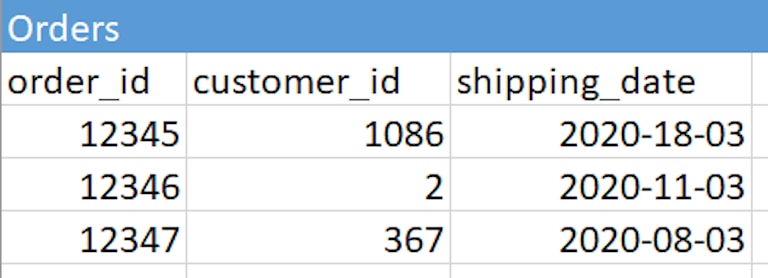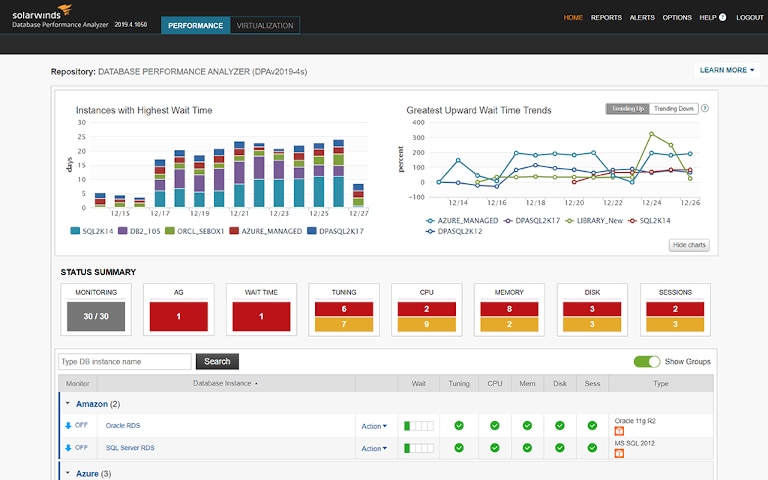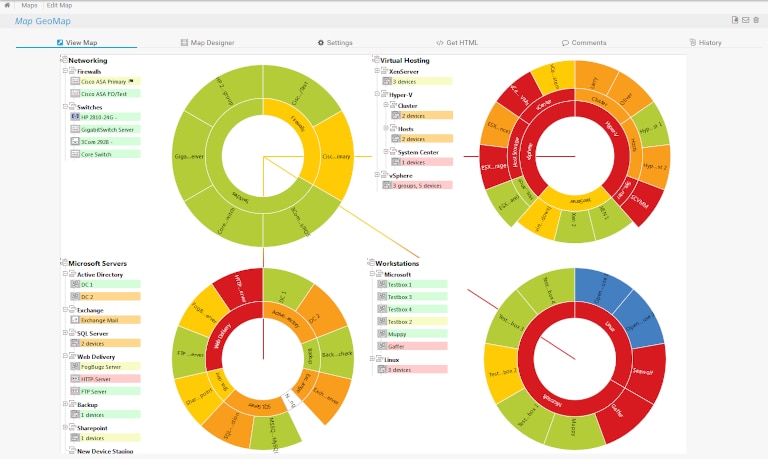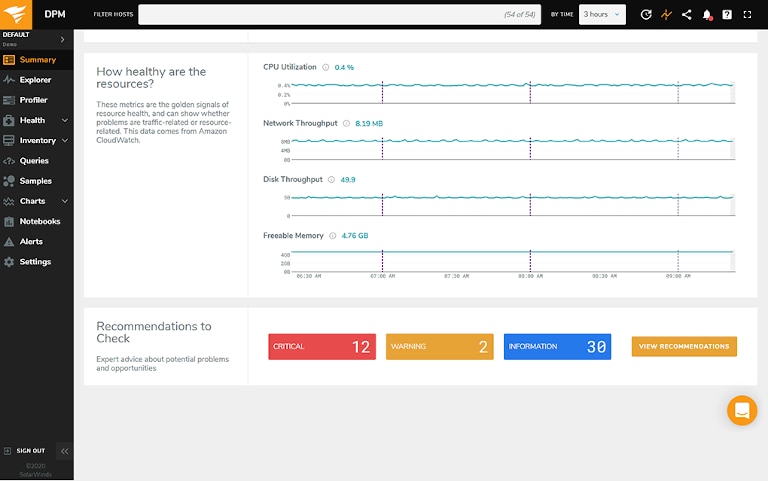Last Updated: 9/23/2022 2:13PM
It’s a truth universally acknowledged that a person in possession of a good amount of data must be in want of a database management system (DBMS). However, not all database management systems are created equal.
This post tackles the issues involved in deciding on a DBMS. What should you look for when choosing a data model and a DBMS? Once you’ve decided, should you use database monitoring tools? If the answer is yes, which tools should you use? We’ll consider some of the most popular DBMS software options available, and we’ll cover what to look for in a database monitoring tool.
What Is a Database Management System?
A database is simply a structured collection of data. As you’ve no doubt learned, however, storing and accessing data can be a fine art. If you’ve ever done it the wrong way, you’ve probably faced data not being available when you needed it, data being lost or corrupted, or increasingly unmanageable databases. Keeping data updated in a reliable way (and out of reach of unsavory characters) is even harder.
Enter the DBMS. A DBMS allows you to store, manipulate, retrieve, and analyze data in a database. It solves the problem of data being stored in different formats, on different systems, and in redundant ways, which can lead to problems in the future.
A DBMS also provides you with an array of administrative functions, such as restricting access to sensitive data, tracking modifications, monitoring performance, and making backups. Additionally, it can log data for security and compliance auditing.
Since you now know why you need a DBMS, where should you start? Choosing the right DBMS depends on your needs. It also depends on the type of data you have. Before diving into different DBMS software, we’ll give you a bird’s-eye view of database models. There’s a lot to talk about here, so be aware this is a simplified analysis.
Common Database Models
Database models describe the way databases store data, and this largely comes down to whether your data is structured or unstructured. Another factor in your choice of model is how much data you need to store and how much traffic to the database there will be.
By structured data, we mean data capable of being neatly arranged into rows and columns (like a spreadsheet). Unstructured data, on the other hand, can’t be easily coerced into ordered rows and columns. We’ll start by looking at storage for structured data because these databases have been around for a long time.
Relational Databases
Relational databases are arguably still the bread and butter of the database world. Simply put, data is stored in different tables that have relationships with each other. For example, one table may list all customers in a company while another gives information on orders. Within a table, rows represent cases and columns represent attributes. A unit of information is stored only once to avoid redundancy.


Benefits of Relational Databases
Relational databases are strict about the type of data you can enter. The data must be valid, and all column entries must be of the specified data type (consistency). Relational databases also make sure each action is a single unit. In other words, an update either takes place or doesn’t—there is no partial updating (atomicity).
When performing several actions, the effect of each action should still be the same as if it were performed on its own (isolation). Plus, the data is protected if the system fails (durability). ACID compliance typically makes relational databases the best choice for financial and health-care data.
Relational databases usually use Structured Query Language (SQL). This makes it easy for developers to switch from one DBMS to another, as queries are standardized.
Downsides of Relational Databases
Because of a relational database’s rigid schema, it can be slow to set up and costly to maintain. With a large amount of data, the relations can be complex. This means relational databases don’t always handle enormous amounts of data well. This is especially true when there’s a graph or network structure to the data or when you need to have flexibility about the type of data going into the database. Most relational databases also have limits on the length of the data you can enter into a field.
The Big Names
Some of the big proprietary relational database management systems include Oracle and Microsoft SQL Server. On the open-source side, MySQL and PostgreSQL dominate the field. They also have enterprise editions available.
Non-Relational Databases
Unlike relational databases, non-relational databases are semi-structured. They can easily store various data forms, such as pictures, videos, and music. Non-relational databases were designed to handle huge amounts of data and to be highly scalable to negotiate load changes.
Non-relational (or NoSQL) databases come in many shapes and sizes, including document databases, key-value databases, graph databases, and wide column databases.
Unlike relational databases, different NoSQL databases tend to vary widely, even if they use the same underlying data model. These differences make it hard to be proficient in all the different NoSQL databases. Knowing your needs is important to prevent many false starts.
Document Model
Document model databases store data as a collection of documents (document-oriented) in the form of JSON or JSON-like objects. MongoDB, arguably the most popular NoSQL database, uses this document model.
The data in a document store is saved in a nested JSON file rather than in rows and columns. The JSON example below shows what order and customer information might look like in a document store:
{
“orders”: [
{
“order_id”: “12345,”
“customer_id”: “1086”
“customer”: [
“customer_id”: “1086,”
“first_name”: “Jake,”
“last_name”: “Smith,”
“phone”: “9893722156,”
]
}
]
}
Many developers love MongoDB because it’s easy to set up, it’s flexible, and it has fast query response times. Document-oriented databases are also easy to scale horizontally through sharding (distributing data across machines). However, they don’t support joins like a relational database, and they have limited nesting capability. Not being able to join data also means there’s more data redundancy.
Key-Value Model
Other NoSQL databases store data as key-value pairs. In a key-value store, a key is associated with only one value.
A key-value store is commonly used to store data such as customer preferences. Key-value stores have high read/write speed and excellent availability. Redis, for example, is popular because of its lightning fast in-memory data storage. However, key-value stores are not good for large data sets or data with complex relationships.
Graph Database Model
Graph databases put relationships at the forefront. Each node in the graph represents an entity, and each connection shows the relationship between entities. Neo4j is a popular graph database.
Graph databases are good for data with a graph structure, such as data on social networks, fraud detection, or medical history. Unfortunately, graph databases aren’t good with large volume queries or transactions.
Wide Column Store
A wide column store traditionally has rows and columns for data (though there are exceptions to this rule), but it’s not a relational database. A wide column store, or columnar database, emphasizes saving data by column rather than by row. Unlike in a relational database, names and data types can differ from row to row.
In columnar databases, the data can be highly compressed. It’s also easy to distribute data across multiple machines. Certain queries are fast, such as ones you need to aggregate by column (e.g., “what’s the average age of customers?”). However, transactions like inserting data become much slower than they would be in a relational database. For this reason, it’s better to do bulk inserts than many small transactions.
If you need to perform analytics on a large amount of data, a columnar database such as Apache Cassandra or Amazon DynamoDB might be right for you.
Things to Think About When Choosing a DBMS
To sum up all this information, here are a few aspects you should consider when choosing a DBMS:
- Database model
- Consistency
- Availability
- Cost
- Security
- Usability
Once you have a DBMS, you may also want to monitor its performance.
TOP 6 Database Monitoring Tools
Database monitoring is one of the most essential services you can provide as an IT admin. Whether your organization works with customer-facing applications or on-premises services, fast database performance is the key to an effective enterprise. With the right database monitoring tools, you can identify slow queries, reduce wait times, and troubleshoot any issues slowing down your data retrieval.
When you’re looking to invest in database monitoring, the following features are important to consider:
- Integration with your existing software
- Supported languages
- Ease of use
- Cost
- Dashboard and report quality
As with any IT management service, you’ll need to weigh the pros and cons of every database monitoring solution before you find which one’s right for you. Fortunately, there’s a host of high-quality monitoring tools available—and almost all of them have free trials. Here are a few options:
- SolarWinds Database Performance Analyzer (DPA)
- SolarWinds SQL Sentry
- Paessler PRTG Network Monitor
- SolarWinds Database Performance Monitor
- Nagios
- Datadog
1. SolarWinds® Database Performance Analyzer (DPA)

SolarWinds® Database Performance Analyzer (DPA) offers optimization and tuning for various relational databases and supports cloud and physical databases. With agentless architecture, DPA provides a sophisticated solution with easy setup and use. Making sense of your DPA metrics is intuitive, with wait-based analytics available on the dashboard.
Identifying database issues is only the first step in addressing slow queries, and DPA understands this. To fix bottlenecks, it allows you to search for SQL statements, then tune queries with machine learning (ML). The tool also provides detailed data of historical trends and real-time metrics, so you can address recurring issues and prevent future performance bottlenecks. Plus, it’s super easy to use. Start with a 14-day free trial.
2. SolarWinds SQL Sentry
SolarWinds SQL Sentry is a solid database management solution for all your SQL database needs. Many of today’s enterprises use SQL servers, and SQL Sentry is one of the industry’s most popular SQL monitoring solutions.
With SQL Sentry, you get monitoring and documentation for many different types of SQL databases—from the traditional SQL Server to SQL Server on VMware, Hyper-V, and SQL-based cloud environments. Because the tool works for on-premises and cloud-based documentation, it’s beneficial for keeping a consistent monitoring solution while you’re migrating to the cloud. You can use SQL Sentry to document your database before, during, and after cloud migration.
Plus, when it’s time to troubleshoot issues with your SQL database, it has several highly-recommended troubleshooting tools. Like the other SolarWinds monitors, you can get everything from query analytics to historical performance trends. Give it a try with the 14-day free trial.
3. Paessler PRTG Network Monitor

Paessler is one of the most popular database monitoring tools in the industry, with several features offering unique advantages for your IT team. The main draw of Paessler is its visualizations, which allow you to interpret performance trends using dashboards and maps easily. User-friendly visuals can make the management process much faster and a lot easier.
Another advantage is Paessler isn’t only a database management tool—it’s a comprehensive monitoring solution for your network, allowing you to make sense of all your relational database metrics, as well as SNMP and WMI metrics, plus leverage traffic monitoring.
PRTG Network Monitor is also useful because of its Windows- and web-based GUI. Like the other high-caliber database monitoring solutions, PRTG has real-time alerts and reporting. PRTG uses its proprietary database to monitor SQL servers. Visit the site for a 30-day free trial.
3. SolarWinds Database Performance Monitor

For those seeking NoSQL support, SolarWinds Database Performance Monitor (DPM) is a software as a service (SaaS) platform with a web-based user interface designed to support many different database management system (DBMS) software solutions. DPM offers many of the same benefits as SQL Sentry, except for NoSQL relational databases, which means you can use it to monitor database performance for on-premises, cloud-based, and hybrid databases. For on-premises monitoring, DPM is compatible with several virtual databases.
Also, troubleshooting is an intuitive process with query search tools. You can filter for specific queries and use alerts to identify problem queries possibly causing a bottleneck. Real-time alerts with customizable thresholds are a fast and accurate way to identify performance issues. Overall, DPM is a solid choice for any NoSQL monitoring project. You can use it to monitor the health of several databases, including Oracle, Apache Cassandra, MongoDB, and SAP, to name a few. The free trial lasts for 14 days.
4. Nagios

If you want an open-source solution, Nagios offers network and log monitoring with both paid (Nagios XI) and open-source options. Nagios supports several relational DBMSs and MongoDB. Nagios products offer scalability and high availability. They have a good range of default reports and customizable web-based user interfaces for dashboards. However, they’re not as sleek or easy to use as SolarWinds products. Try a free trial of Nagios XI here.
Datadog
Datadog offers a well-rounded approach to all the basics of database monitoring. It provides effective tools for identifying problem queries, which can go a long way in troubleshooting database bottlenecks. Datadog works for various database types, with plenty of integrations for different monitoring goals.
One of the major selling points of Datadog is its multi-user interface, which allows your team members to collaborate from a variety of interfaces. Multi-user access can be challenging for database monitoring since you need to maintain the security of your data while providing access to several different devices. By providing insight into queries without exposing the specific details of sensitive data, Datadog helps ensure security. If you’re looking for no-frills database management for a sizable team, Datadog is a solid option.
How to Choose the Right Database Monitoring Solution for Your Company
Choosing the right database monitoring solution for your needs can save you a lot of hassle. By identifying problems early, database monitoring can save you time, money, and resources. This is why a real-time monitoring solution is so important—when you get performance alerts as soon as a bottleneck occurs, you can address the issues immediately. The best database monitoring tools combine accuracy and efficiency for a well-rounded approach to database performance management.
When looking for a database monitoring solution, you should focus on a solution allowing you to monitor performance and identify slow queries and provides troubleshooting tools, the ability to schedule backups, and logging. In the end, your database monitoring tool should ensure your databases are functioning at their best. With a good understanding of the options available in today’s market, you can find the right solution for your IT team.
This post was written by Michelle Hoogenhout. Michelle is a behavioral data scientist interested in all things data-related—from extracting data to visualization, prediction, and data ethics. She has worked in health and education-related data science and analytics for the last 10 years.

